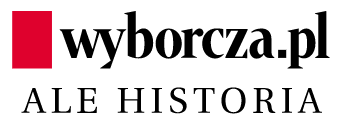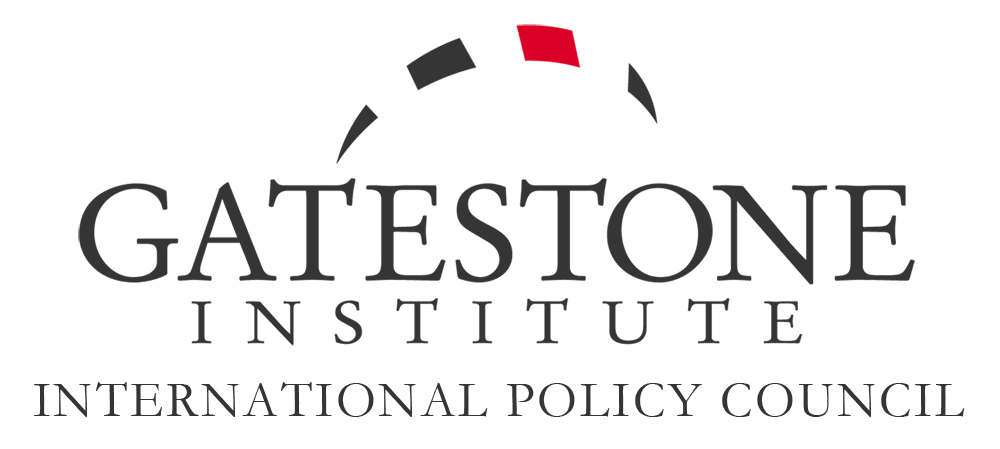 Ks. Alfred Wierzbicki (Fot. Jakub Orzechowski / Agencja Wyborcza.pl)
Ks. Alfred Wierzbicki (Fot. Jakub Orzechowski / Agencja Wyborcza.pl)
 Węzeł gordyjski KUL. Jak zrozumieć degradację uniwersytetu, który mnie ukształtował?
Węzeł gordyjski KUL. Jak zrozumieć degradację uniwersytetu, który mnie ukształtował?
Ks. Alfred Marek Wierzbicki
Ktoś rozpowiada, że rektor planuje zwolnienia. Atmosfera na KUL-u naprawdę gęstnieje.
Paweł Smoleński artykułem na temat KUL-u włożył kij w mrowisko. Chwalebnej legendzie „wyspy wolności”, „od Berlina do Seulu filozofia tylko na KUL-u”, uczelni, która wydała papieża, przeciwstawiona została ciemna legenda prowincjonalnej, ksenofobicznej, antysemickiej, wstecznej i pazernej szkółki.
Chodzi o to, że obydwie narracje odpowiadają rzeczywistości dopiero wtedy, gdy ukazuje się je razem. Na KUL-u dawniej i całkiem niedawno były obecne i ścierały się różne nurty katolicyzmu, a forsowanie jego endeckiej i integralistycznej postaci – co ma miejsce obecnie – jest wyraźnym zerwaniem z tradycją tego uniwersytetu. Trafnie zwracają na to uwagę Wojciech Samoliński i Paweł Matyaszewski w komentarzach do artykułu Smoleńskiego.
Podtrzymuję moje krytyczne opinie, przytoczone w tym artykule, zabieram głos nie po to, by je korygować, lecz by pogłębić ich kontekst. Bez niego trudno zrozumieć intelektualną i moralną degradację uniwersytetu, który mnie ukształtował, do którego rozwoju na miarę swych możliwości starałem się wnosić otwartość i krytycyzm w ciągu 30 lat pracy. W tekście Smoleńskiego jest kilka nieścisłości, a nawet drobnych błędów, w rzeczy samej nie o szczegóły chodzi, lecz o to, czym naprawdę był KUL, czym się staje, wreszcie, czy jest to proces nieuchronny i nieodwracalny?
Jakaś kolaboracja była konieczna
Razi mnie sam tytuł „Katolicki Uniwersytet Lizusowski”. Gdyby dokonywać bilansu 100-lecia, to w lubelskiej uczelni było więcej twórczości i oporu aniżeli uległości. Zresztą, czy były w PRL instytucje nieuległe? Jakiś stopień kolaboracji z komunistycznym państwem był konieczny, aby KUL mógł przetrwać. Izolacja, ograniczanie działalności, a nawet groźba likwidacji towarzyszyła mu przez cały okres władzy ludowej. Nie o samą uległość chodzi, lecz o jej stopień i granice.
Nie można utożsamiać uległości Mieczysława Krąpca i uległości Mirosława Kalinowskiego. Rektor z lat 70. liczył się z siłą komunistycznego państwa i podejmował z nim „dialog” – chętnie czy niechętnie, to materia dla badań historyków – aby zapewnić warunki do alternatywnej dla komunizmu kultury chrześcijańskiej. Rektor Kalinowski godzi się na uczynienie z KUL-u przez ministra Czarnka poligonu wymiany elit. Jest to działanie bardziej podejrzane i szkodliwe dla przyszłości Polski, a przede wszystkim dla losów Kościoła katolickiego w pluralistycznym, coraz gwałtowniej laicyzującym się społeczeństwie.

Katolicyzm otwarty
Na KUL-u spotkałem się z katolicyzmem otwartym, piszę o tym w opublikowanej niedawno częściowo autobiograficznej książce „Między innymi o radości” (Lublin, Gaudium 2022). Studiowałem teologię i filozofię, wiele zawdzięczam również mistrzom humanistyki. Zapytam po Herbertowsku – kim byłbym, gdybym nie spotkał ks. Mieczysława Brzozowskiego, ks. Adama Ludwika Szafrańskiego, Adama Stanowskiego, Jerzego Kłoczowskiego, Ewy i Czesława Deptułów, Ireny Sławińskiej, Czesława Zgorzelskiego, Stefana Sawickiego, Leszka Mądzika, ks. Zdzisława Chlewińskiego, ks. Janusza Mariańskiego, ks. Tadeusza Stycznia, ks. Andrzeja Szostka, Marii i Jerzego Gałkowskich, ks. Andrzeja Bronka, Wojciecha Chudego, Elżbiety Wolickiej-Wolszleger, Romualda Jakuba Wekslera-Waszkinela? Uczyłem się od nich myśleć szeroko, dociekliwie i krytycznie, życzliwie dla każdego poglądu, z bezwzględnym, lecz nie fanatycznym, szacunkiem dla prawdy.
Już w liceum docierała do mnie sława Krąpca, ale zraziłem się do niego po pierwszych wykładach.
Większość filozofów to jełopy, a prawda tylko u św. Tomasza z Akwinu, którego najlepiej miał zrozumieć sam Krąpiec.
Ale nawet z nim można było czasem dyskutować, choć wolał, aby go słuchano. Było wesoło na jego zajęciach, bo opowiadał rubaszne anegdoty i pikantne dowcipy. Koncepcję filozofii miał spójną i jasno artykułowaną. Szkoda, że w późniejszych latach więcej uwagi poświęcał Feliksowi Konecznemu niż św. Tomaszowi. Wtedy stał się ideologiem Radia Maryja.

Lublin, czerwiec 1994 rok. Prof. Stanisław Wielgus, biskup lubelski Bolesław Pylak i były rektor KUL prof. Mieczysław Krąpiec podczas uroczystości 75 lecia Katolickiego Uniwersytetu Lubelskiego.
Choć wykłady Krąpca były obowiązkowe, nikt nie musiał stawać się krąpcystą czy – jak zwykł mówić Stanisław Majdański – „krąpcoidą”. To prawda, że było ich wielu, ale filozofia na KUL-u to nie tylko Krąpiec i jego uczniowie. Prócz tomistycznej metafizyki można było się zetknąć z innymi nurtami filozofii.
Logicy nawiązywali do szkoły lwowsko-warszawskiej, interesowali się współczesną filozofią analityczną. Etycy od Wojtyły rozwijali etykę personalistyczną, rewidującą założenia etyki arystotelesowsko-tomistycznej. Krąpiec oskarżał Tadeusza Stycznia o kantyzm. Ich spór o podstawy etyki angażował całe środowisko, bodaj kilkunastu autorów opublikowało swe głosy w tej dyskusji. Trwała ona dobre dwie dekady.
Filozofia na KUL-u: rzetelność i pasja
Według Smoleńskiego nikt na KUL-u nie słyszał o Ingardenie. Pudło! Akurat myśl Ingardena była u nas kultywowana z wyjątkową intensywnością. W latach 50. i 60 przyjeżdżał wielokrotnie z wykładami gościnnymi. W trakcie studiów chodziłem na wykład Antoniego Stępnia o filozofii Ingardena. Co więcej, wśród obowiązkowych lektur były zawsze książki Ingardena. Było żywe zainteresowanie całym nurtem fenomenologii, odmiennym, lecz bliskim filozofii klasycznej. Powstawały prace magisterskie o Husserlu, Schelerze, von Hildebrandzie i oczywiście o Ingardenie.
 Roman Ingarden
Roman Ingarden
W moich latach studenckich uderzała rzetelność i pasja, z jaką profesorowie i studenci zajmowali się filozofią. Czytaliśmy chyba więcej niż w innych ośrodkach. Dziś publikacje zagraniczne są łatwo dostępne, ale w latach 60. czy 70. studenci innych uczelni z trudem mogli po nie sięgać w swych uczelnianych bibliotekach. Inaczej było na KUL-u, istniała tu dobrze wyposażona biblioteka. Może także po to Krąpiec musiał się zadawać z komuchami, aby dyrektor biblioteki Andrzej Paluchowski skrzętnie gromadził zagraniczną literaturę fachową oraz polskie piśmiennictwo emigracyjne…
 Andrzej Paluchowski
Andrzej Paluchowski
Te bardziej trefne książki znajdowały się w prohibitach. Tak było oficjalnie, ale można było z nich korzystać. Nie kto inny, ale właśnie Krąpiec w 1983 roku polecił mi jako studentowi przeczytać „Obecność mitu” Leszka Kołakowskiego i dał upoważnienie dla pracowników biblioteki, aby wypożyczyli mi książkę wydaną przez paryską „Kulturę”. Dyskutowaliśmy o niej na seminarium. Owszem sam profesor zachowywał się jak guru, ustawiał Kołakowskiego jak chłopca do bicia, ale kazał nam go czytać. Na takim seminarium nie dało się nudzić.
Krąpiec rósł w siłę
Według Smoleńskiego Krąpiec miał zatrudniać Stefana Swieżawskiego, było akurat odwrotnie, to Swieżawski w latach 50. ściągnął na KUL Krąpca, a potem Wojtyłę z myślą o tworzeniu szkoły filozoficznej. Byli inni, czerpali z innych źródeł i dlatego mogli się intelektualnie dopełniać. Niestety, potem gdy Krąpiec rósł już w siłę, najpierw jako dziekan, a potem rektor, marginalizował, a czasami eliminował ludzi, którzy nie chcieli uprawiać filozofii na jego modłę.
Mimo wszystko filozofia broniła się przed imperializmem jednej szkoły i do dzisiaj filozoficzne środowisko kulowskie jest pluralistyczne, współpracuje z wieloma ośrodkami w kraju i za granicą. To tylko epigoni Krąpca głoszą, że są oni „lubelską szkołą filozoficzną”, faktycznie rozwinęło się kilka „szkół”. Piszę o filozofii, bo przez lata należałem do tego kręgu, ale podobnie jest na innych kierunkach. Jest to normalne na uniwersytecie, że toczą się dyskusje, podejmuje się problemy, które tylko dzięki badaniom i otwartej debacie można próbować rozwiązywać.
Akces do mediów Tadeusza Rydzyka
Potencjał „katolicyzmu otwartego” próbował rozbudzić na KUL-u abp Józef Życiński, pełniąc funkcję Wielkiego Kanclerza w latach 1997-2011. Nie przywiózł przecież z Krakowa jakiegoś intelektualnego desantu, lecz zastał na KUL-u ludzi, którzy oddziaływali swą myślą już wcześniej na przemiany posoborowego katolicyzmu w Polsce. Spora grupa kulowców już od lat 40. zasilała ideowo „Tygodnik Powszechny”, „Znak” i „Więź”. Wystarczy przejrzeć dawne numery tych pism, aby zauważyć, jak wielu pracowników KUL-u ogłaszało w nich swe artykuły, rozmawiając w ten sposób ze społeczeństwem.
 Lublin 2009. Arcybiskup Józef Życiński
Lublin 2009. Arcybiskup Józef Życiński
Niestety, w latach 90. nastąpił akces znacznej części profesorów z KUL-u do mediów o. Rydzyka. Życiński nie miał wątpliwości, że jest to ze szkodą dla katolicyzmu. O Radiu Maryja miał odwagę powiedzieć, że „katolicki głos w twoim domu ma tyle samo wspólnego z katolicyzmem co »Trybuna Ludu« z ludem”. Życińskiego dziś ledwie się wspomina, jakby był w Lublinie biskupem jakieś 100 lat temu.
Atmosfera na KUL-u gęstnieje
Odszedłem z KUL-u, ponieważ zdałem sobie sprawę, że na uniwersytecie kierowanym przez Kalinowskiego i Sitarza nie ma już wolności akademickiej. Wprawdzie uniewinniono mnie w postępowaniu dyscyplinarnym, ale sam fakt, że wszczęto je ze względu na moją krytykę dokumentu Episkopatu w sprawie LGBT bez jakiejkolwiek dyskusji ze mną, pokazuje, że debatę naukową zastępują represje. Chyba nawet nie chodziło o to, żeby mnie ukarać, lecz przestraszyć. Odszedłem, bo chcę mieć swobodę wypowiedzi, a tej KUL mi już nie zapewnia.

W artykule Smoleńskiego nie znajduję krzty nieprawdy na temat endeckich demonów grasujących dziś na KUL-u. Ma także rację, twierdząc, że zawsze były one obecne, natomiast nie można się zgodzić z tezą, że jest to jedyne oblicze KUL-u. Staram się ten tekst czytać życzliwie, nie jest on żadną napaścią na dobre imię lubelskiej uczelni, powinien zainicjować debatę.
Wydaje się ona na razie niemożliwa. Władze uczelni jej nie chcą, zbyt wiele by je kosztowała. Pracownicy naukowi chyba się boją. Ktoś rozpowiada, że rektor planuje zwolnienia i wykorzysta do tego ewaluację. Atmosfera na KUL-u naprawdę gęstnieje. Rozumiem tych, którzy oburzyli się na artykuł w „Wyborczej”. Mają przecież inne doświadczenie KUL-u, nie muszą mieć zaufania do mediów, a zwłaszcza liberalnych.
Na KUL-u wpajano mi, że należy przyjmować każdą prawdę, niezależnie od tego, kto ją głosi.
Im wcześniej dojdzie do publicznej debaty na temat KUL-u, tym większe szanse na jej efektywność. Niełatwo bowiem rozwiązać węzeł gordyjski trzech kryzysów, które w ostatniej dekadzie trapią KUL. Jest to kryzys uniwersytetu, z którym nie poradziła sobie reforma Gowina, a raczej jeszcze go pogłębiła. Ponadto kryzys polityczny w Polsce promujący autorytaryzm. A do tego kryzys Kościoła zagubionego wobec wyzwań współczesności, co ma istotne znaczenie dla rozumienia zadań uniwersytetu katolickiego.
Ks. prof. Alfred Wierzbicki, teolog, etyk, przez 30 lat związany z Katolickim Uniwersytetem Lubelskim, z którego odszedł w październiku. W tej chwili jest wykładowcą na wydziale Filozofii i Socjologii Uniwersytetu Marii Curie-Skłodowskiej w Lublinie.
Zawartość publikowanych artykułów i materiałów nie reprezentuje poglądów ani opinii Reunion’68,
ani też webmastera Blogu Reunion’68, chyba ze jest to wyraźnie zaznaczone.
Twoje uwagi, linki, własne artykuły lub wiadomości prześlij na adres:
webmaster@reunion68.com



